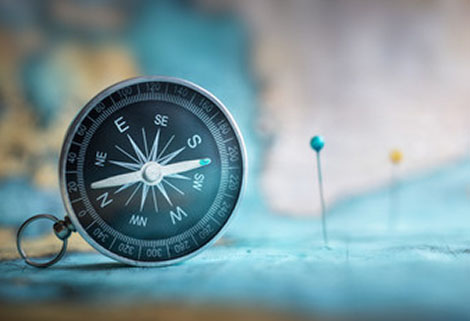boat furniture
it's more than ok
Tibor Kunya is the owner of Ok Joinery Ltd, a company based in Kidderminster who design and manufacture furniture for houses, offices, sports complexes and, more interestingly for us, narrowboats, wide beams and Dutch Barges.
Originally from Hungary, Tibor is the owner of OK Joinery. He is both a Master Joiner and a qualified Marine Engineer. He began his working life expecting to be carrying out agency work, but he very soon found himself working full time for Sealine International, a boat building company of high repute. ( A leading UK boat builders, bought up by a German company in 2013.) Working with designers on the interiors of boats, very often with complex hull shapes, Tibor realised that he had found his vocation. He loved working on boats and trying to make everything fit perfectly and work correctly. And he absolutely loved being creative.
After a while, Tibor decided to go free-lance, and established OK Joinery Ltd with his partner Miroslaw Ochnik. Being based in the Midlands, Tibor turned his attention toward the inland waterways and began to concentrate on inland waterway craft. He explained, "The boats themselves are in some ways more straightforward to work on, as the hull shapes have less tapers, curves and tricky radiuses. Motor boat furniture has to be shaped, but narrowboats have straight sides. The only area that is more complicated and where there’s a bit of an angle is under the gunwale really.”
According to Tibor, many narrowboats have similar internal dimensions, which makes for more straightforward templates when designing fittings for them. However, this also means that careful planning is required. There are always problems which can be unique to a particular boat. But as Tibor says, "Making things fit in tiny spaces isn't new to us."
Practical creativity is very much part of Tibor’s working life. Recently it’s seen him design a narrow boat dinette/bedroom/living space with about fifteen permutations, and finding out how this could function has clearly given him a lot of pleasure. “A car mechanic just fixes things that have already been made. With joinery you’re creating something, and I love working with wood,” he said.

The dinette project came through conversations with boat building clients, and gradually the idea of a space that could be both lived in and used for sleeping took shape. “We were looking at something that could change from having seats into a single or even a double bed, and started by sitting down and sketching,” he said.
A prototype was built using sections of MDF, and the design was refined and developed, so that the end product has around seven permutations. Tibor claims that it’s unique and thinks it could also have applications in recreational vehicles, campers and caravans. To gauge reaction and get feedback, Duplex Dinette was built into a show boat at the Crick boat show in 2018. The company were back again in 2019 on the basis that Crick was a good place to get feedback and meet potential clients. Tibor was heartened by the number of boaters who liked what he’d done.

“This business has to be based on trust. What we’re doing is not like buying a chocolate bar. People need to go away and think about things,” he said. The design is essentially fit for straight galley with passageway in the middle and also fit for “L” Shaped kitchen with basic size parameters of around 6ft x 6ft, although there is some wriggle room on the exact dimensions, so the product can be adapted for different sized narrowboat interiors. The deluxe version of Duplex Dinette can be used now in fifteen different modes. Tibor envisages it as being something that can be bought and fitted virtually as a flat pack, although he will also install it as a retrofit, and is keen to find work with narrow boat builders so that variations of his design become original equipment.

All of which begs the question. Does he own a narrowboat himself? Tibor said because of the pressures of work and a busy family life, that he does not, and adds that his children are sufficiently young that their idea of fun is simply to play outdoors. “I don't own a boat, I’m a family man with two kids and I’m just too busy. I am sure I'll design one boat for myself when I am retired! ” He talks wistfully about this situation changing when his children are older, but seems more than happy that for now, messing about with boats involves designing their interiors rather than piloting them on the canal network.
things to consider when buying a dinette for a narrowboat
Owning a narrowboat and experiencing life on it has become very popular. Recent events have also prompted thoughts for many people of changing home. Also the aspiration of living at a slower pace, restful and relaxed. Voyaging along a beautiful canal, visiting amazing places. What else is needed ?
The answer is the boat itself. The options for everyone vary and depend on personal budget. Buying brand new, second hand or a start up project that you fit yourself.
Here we are considering one option for furnishing your boat. In particular your lounge area, knowing that your desire is to choose the best furniture for the purpose. Some people think it's easy, just buy a sofa and the seating area is sorted. However, they then realize it's too big to get through the door and that it also takes up a large space in the boat.
Narrowboat lounge seating that is simpler than a sofa, is a Dinette. Dinette furniture can include the options of a sofa, seating with table, a bed and storage in the base units. A typical multifunctional bespoke opportunity to cater for your needs.
OK Joinery Limited manufacture many different types of dinette. You can choose from a Single dinette , Pullman Dinette , L-shape dinette and our new multifunctional Duplex Dinette. Bespoke Dinette options also exist.
All furniture is delivered to your boat as ready assembled units that are easy to install. All work handmade in Worcestershire. Please do not hesitate to get in touch to discuss your needs.
 If you are fitting out a new canal boat or maintaining an existing narrowboat you need to be able to find suppliers who specialise in narrowboat furniture.
If you are fitting out a new canal boat or maintaining an existing narrowboat you need to be able to find suppliers who specialise in narrowboat furniture.
With OK Joinery, you can be sure to find something that will suit your lifestyle as well as offering practicality, style and comfort. The quality and unique details of the interior fixtures and fittings will ensure that your boat becomes “a cut above” the rest.
01562 540204 / 07895 438833
orders@okjoinery.co.uk
https://www.okjoinery.co.uk
https://www.facebook.com/Okjoinery

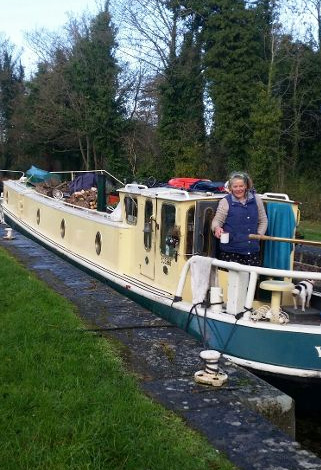 It’s pretty much essential for you to enjoy the outdoor life if you live aboard a narrowboat (or wide-beam) so it’s likely that your holiday will be one where you spend your time outdoors, take your dog with you and you’re able to enjoy the freedom of choosing where you go.
It’s pretty much essential for you to enjoy the outdoor life if you live aboard a narrowboat (or wide-beam) so it’s likely that your holiday will be one where you spend your time outdoors, take your dog with you and you’re able to enjoy the freedom of choosing where you go.
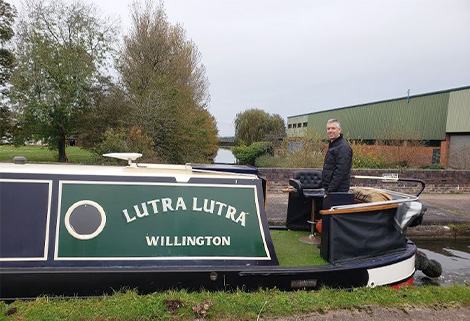 When we bought our narrow boat, Lutra Lutra, last year, we were awash with happy memories of carefree cruising holidays. We spent a full fortnight congratulating ourselves on breaking free from the tedium of suburban life and embracing the freedom of live-aboard continuous cruising. And then reality set in...
When we bought our narrow boat, Lutra Lutra, last year, we were awash with happy memories of carefree cruising holidays. We spent a full fortnight congratulating ourselves on breaking free from the tedium of suburban life and embracing the freedom of live-aboard continuous cruising. And then reality set in...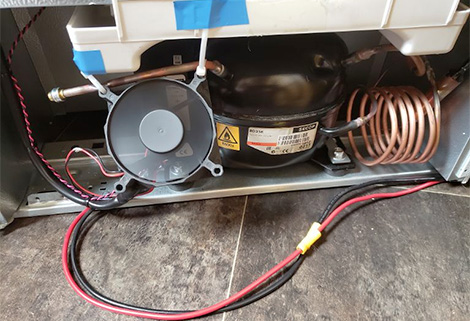 Armed with a GCSE in physics, I was ill equipped to conduct forensics on our dead fridge. But when the new one arrived it had no plug! So I bought crimping tool and set to work.
Armed with a GCSE in physics, I was ill equipped to conduct forensics on our dead fridge. But when the new one arrived it had no plug! So I bought crimping tool and set to work.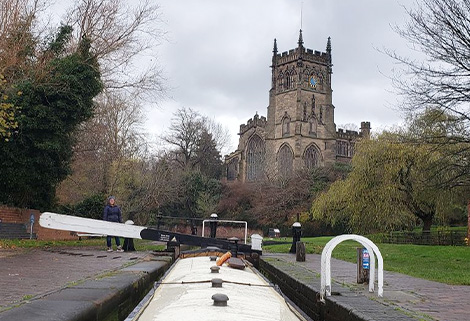 Finally, if you really want to go out in style then hang out round the locks. We undertook a day's lock training recently. It should have been entitled 101 ways to die at a lock. We are super-careful around locks, but a friend was nearly sunk by helpful hire-boaters on the Oxford canal. From catching fenders to getting caught up on the sill, you need to keep your wits about you. And, should you happen to fall in at a lock, just remember that the human body is not buoyant in turbulent water. It might just be the last thought that you have.
Finally, if you really want to go out in style then hang out round the locks. We undertook a day's lock training recently. It should have been entitled 101 ways to die at a lock. We are super-careful around locks, but a friend was nearly sunk by helpful hire-boaters on the Oxford canal. From catching fenders to getting caught up on the sill, you need to keep your wits about you. And, should you happen to fall in at a lock, just remember that the human body is not buoyant in turbulent water. It might just be the last thought that you have.






 The Pig Place is open from early April to the end of October. Dogs are welcomed, but under 18s only allowed up until 6pm. Food is served daily from 8am, and the bar is open from lunchtime.
The Pig Place is open from early April to the end of October. Dogs are welcomed, but under 18s only allowed up until 6pm. Food is served daily from 8am, and the bar is open from lunchtime.